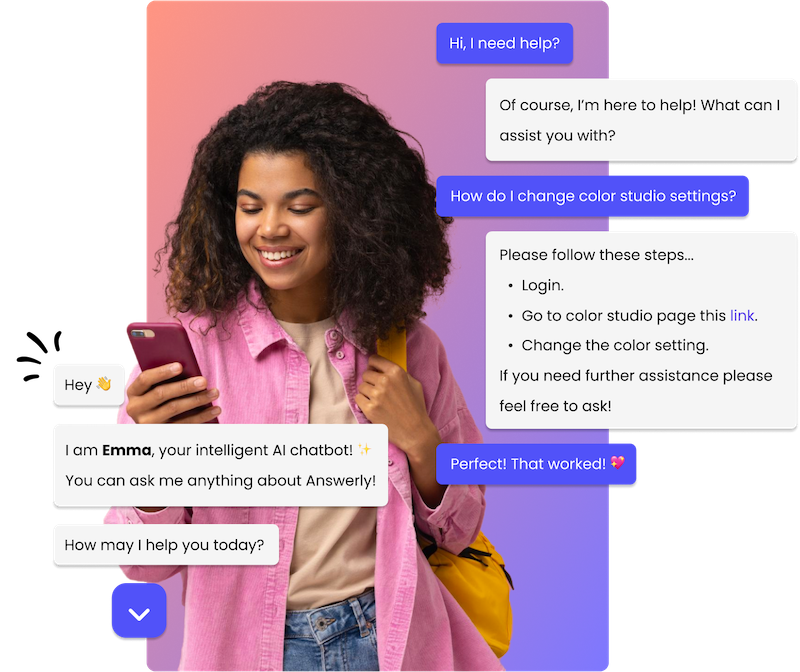Did you know that more than 50% of adults now use voice assistants on a daily basis? This rising trend has sparked a demand for AI assistants that can better understand and respond to human language.
Enter natural language processing (NLP), a field of AI that focuses on enabling machines to understand and interpret human language. By enhancing AI assistants with NLP, we can revolutionize the way we interact with technology.
But how exactly does NLP improve AI assistants? Stay tuned as we uncover the fascinating advancements in user interaction, language understanding, speech recognition, contextual understanding, and sentiment analysis that NLP brings to the table.
Improved User Interaction
To enhance user interaction, AI assistants employ natural language processing techniques. These techniques allow AI assistants to understand and interpret human language in a way that mimics human conversation. By utilizing natural language processing, AI assistants can decipher the meaning behind user queries and respond in a more accurate and contextually appropriate manner.
One key aspect of improved user interaction is the ability of AI assistants to recognize and understand different accents and dialects. Natural language processing algorithms are trained to adapt to various speech patterns and linguistic nuances, ensuring that AI assistants can comprehend and respond to a wide range of users.
AI assistants can employ sentiment analysis to gauge the emotional tone of user input. This enables them to respond empathetically and appropriately, taking into account the user's feelings or mood. For instance, if a user expresses frustration or sadness, the AI assistant can provide comforting or supportive responses.
Another way AI assistants enhance user interaction is through their ability to learn and adapt over time. By analyzing user interactions and feedback, AI assistants can continuously improve their responses and personalize their interactions based on individual preferences.
Enhanced Language Understanding
AI assistants have significantly improved their language understanding capabilities through the use of advanced natural language processing techniques. These techniques enable AI assistants to comprehend and interpret human language more accurately, leading to more effective and efficient interactions.
Here are three key ways in which AI assistants have enhanced their language understanding:
- Semantic Understanding: AI assistants now have the ability to understand the meaning behind words and phrases, allowing them to extract context from user queries. This enables them to provide more relevant and personalized responses.
- Entity Recognition: AI assistants can now identify and extract specific entities, such as names of people, places, or products, from user inputs. This enhances their ability to understand user intent and provide tailored assistance.
- Sentiment Analysis: AI assistants have been equipped with the capability to analyze and interpret the sentiment expressed in user queries. This enables them to understand the emotional context behind the text and respond accordingly, improving the overall user experience.
Real-Time Speech Recognition
Real-time speech recognition technology allows AI assistants to transcribe and understand spoken language as it's being spoken. This technology has revolutionized the way we interact with AI assistants, making them more efficient and responsive. With real-time speech recognition, you can simply speak your commands or queries, and the AI assistant will transcribe and interpret your speech instantly.
One of the main advantages of real-time speech recognition is its speed and accuracy. It eliminates the need for manual transcription or waiting for the assistant to process your speech. Instead, it provides immediate results, allowing for seamless and natural conversations.
Real-time speech recognition enhances the user experience by enabling hands-free interaction. You can communicate with your AI assistant while performing other tasks, such as driving or cooking, without the need to physically interact with a device. This not only increases convenience but also improves safety in certain situations.
As more data is collected and analyzed, AI assistants become better at understanding various accents, dialects, and speech patterns. This ensures a more inclusive and accessible user experience for individuals from diverse linguistic backgrounds.
Contextual Understanding and Personalization
Contextual understanding and personalization are crucial for AI assistants to provide tailored and relevant responses to individual users. By considering the context of a conversation, AI assistants can better comprehend the meaning behind a user's queries and provide more accurate and helpful responses. Additionally, personalization allows AI assistants to customize their interactions based on an individual's preferences, making the experience more personalized and engaging.
To enhance contextual understanding and personalization, AI assistants utilize various techniques and technologies:
- Natural Language Processing (NLP): NLP enables AI assistants to analyze and understand human language, including the context, intent, and sentiment behind a user's words. This allows them to provide more relevant and contextually appropriate responses.
- Machine Learning (ML): ML algorithms enable AI assistants to learn from user interactions and adapt their responses over time. By continuously analyzing user data, AI assistants can personalize their interactions and provide more tailored recommendations and responses.
- User Profiling: AI assistants can create user profiles by analyzing user preferences, past interactions, and demographic information. This information helps AI assistants understand individual preferences and provide personalized recommendations based on their unique characteristics.
Advanced Sentiment Analysis
To further enhance the understanding of your emotions and sentiments, AI assistants incorporate advanced sentiment analysis techniques. These techniques enable AI assistants to analyze the tone, attitude, and overall sentiment expressed in your messages or interactions. By using natural language processing algorithms, AI assistants can identify not only positive or negative sentiments but also more nuanced emotions such as happiness, sadness, anger, or excitement.
Advanced sentiment analysis goes beyond simple keyword matching and takes into account the context of your message. It considers the overall meaning and intent behind your words, allowing AI assistants to provide more accurate and personalized responses. For example, if you express frustration with a particular issue, the AI assistant can understand the negative sentiment and offer relevant suggestions or assistance to address your concerns.
This advanced analysis also helps AI assistants adapt to your changing emotions during a conversation. By continuously monitoring and analyzing your sentiment, they can adjust their responses and tone to better align with your current state of mind. This capability not only improves the overall user experience but also helps build a stronger connection between you and the AI assistant.
Frequently Asked Questions
How Does Natural Language Processing Contribute to Improved User Interaction With AI Assistants?
Natural language processing enhances user interaction with AI assistants by enabling them to understand and respond to human language in a more natural and intuitive way. This makes the experience more user-friendly and efficient.
What Are the Key Techniques Used in Enhanced Language Understanding for AI Assistants?
The key techniques used in enhanced language understanding for AI assistants include machine learning, deep learning, and semantic analysis. These techniques help the assistants comprehend and respond to natural language input more accurately and effectively.
Can Real-Time Speech Recognition Be Integrated With AI Assistants for Seamless Communication?
Yes, real-time speech recognition can be integrated with AI assistants, allowing for seamless communication. You'll experience smooth interactions and the ability to interact with your assistant through spoken commands in real-time.
How Does Contextual Understanding and Personalization Enhance the Performance of AI Assistants?
Contextual understanding and personalization enhance the performance of AI assistants by allowing them to adapt to your specific needs and provide more accurate and relevant responses. It makes the interaction with AI assistants more seamless and effective.
What Advanced Sentiment Analysis Techniques Are Employed to Improve AI Assistants' Understanding of User Emotions and Intentions?
To improve AI assistants' understanding of your emotions and intentions, advanced sentiment analysis techniques are employed. These techniques analyze your language and tone to accurately interpret your feelings and goals, enhancing the overall user experience.

